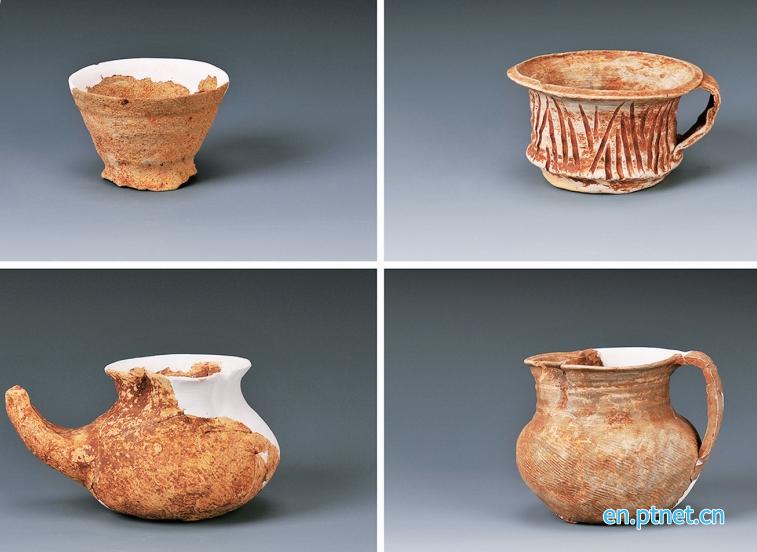"Archaeology in China" briefing reveals major Austronesian discovery
en.ptnet.cn | Updated:2023-12-01 | Lin Kongbo, Stephanie
Partial pottery unearthed at the Donghuaqiu site on Pingtan Island
[Photo from Xinhua News Agency and by the National Cultural Heritage Administration]
The Tourism, Culture, and Sports Bureau of Pingtan recently revealed a briefing made by the National Cultural Heritage Administration on archaeological progress made in numerous archaeological sites under the "Archaeology in China" project. The four key projects mentioned include the ruins of Liangzhu city and a water conservancy system in Zhejiang Province, the Sidun ruin site in Changzhou, Jiangsu Province, the Chenghe ruins in Shayang, Hubei Province, and the origin of the Austronesian family.

Partial pottery unearthed at the Guishan site on Pingtan Island
[Photo from Xinhua News Agency and by the National Cultural Heritage Administration]
The focus of the briefing was on important archaeological findings and the latest scientific research results related to the origin and early development of Chinese civilization. The research on the origin and dissemination of the Austronesian family involved systematic archaeological studies conducted at various sites, including the Jingtoushan site in Zhejiang, the Xiying, Keqiutou, Donghuaqiu, and Guishan sites on Pingtan Island in Fujian, as well as the Wanzaitou and Neijiao sites in Hainan. These studies have enhanced the archaeological cultural and chronological framework of the southeastern coastal region of China, revealing the evolutionary process of prehistoric populations' deep cultivation of the mainland and their utilization of the ocean. The findings provide important clues for exploring the origin and dissemination of the Austronesian family and serve as significant evidence for the "unity in diversity" evolutionary pattern of Chinese civilization and the Chinese nation.
The four archaeological achievements reported during the briefing are key research outcomes of the "Archaeology in China" major projects, including the study of the civilization pattern in the downstream region of the Yangtze River, the research on the cultural process in the middle reaches of the Yangtze River during the Neolithic Age, and the study on the origin and dissemination of the Austronesian family. The National Cultural Heritage Administration will continue to promote major research tasks within the framework of the "Archaeology in China" project, advance archaeological theory innovation, strengthen the integration of humanities and social sciences, modern technology, and archaeology, comprehensively promote the social sharing of archaeological achievements, guide the public in forming accurate historical awareness, and reinforce the sense of community for the Chinese nation.
Timeline of research on the Austronesian family:
In 1985, the Fujian Museum dispatched an archaeological team to conduct large-scale excavations at the Keqiutou site, unearthing over 200 artifacts, including stone tools, bone tools, shell artifacts, and pottery, from 21 shell accumulation pits and one burial. Carbon-14 dating indicates that the Keqiutou site dates back approximately 6,500 years.
In 2017, the Pingtan International Research Center of Austronesian Archaeology was inaugurated. It became the first international research base in China dedicated to Austronesian archaeology. Built jointly by the Institute of Archaeology of the Chinese Academy of Social Sciences, the Fujian Museum, and the Pingtan Comprehensive Pilot Zone, the research center is based on the Keqiutou site cluster.
In 2019, the Keqiutou Archaeological Site Park was selected as one of the first provincial archaeological site parks, while the Keqiutou site cluster was included in the eighth batch of nationally protected key cultural heritage sites.
In 2021, the "Origin and Dissemination of the Austronesian Family" project was included in the "Archaeology in China" major projects by the National Cultural Heritage Administration.

